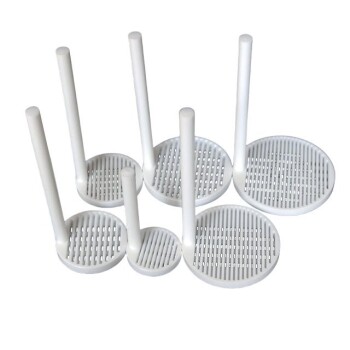Cleaning a diffusion pump is a critical maintenance task to ensure its efficient and long-term operation. The process involves several steps, including draining the oil, disassembling the pump, thoroughly cleaning its internal components, and reassembling it with fresh oil. Proper cleaning ensures the removal of contaminants that can degrade performance. Additionally, it is essential to check other components, such as water flow, heating elements, and alignment, to ensure the pump operates optimally after cleaning.
Key Points Explained:

-
Preparation for Cleaning:
- Ensure the Pump is Cold: Before starting the cleaning process, make sure the pump is completely cold. This prevents burns and ensures safe handling of components.
- Drain the Oil: Remove the old oil from the pump. Contaminated oil can degrade pump performance and should be replaced every six months or as needed.
- Check for Contamination: Inspect the drained oil for signs of contamination, such as discoloration or debris, which may indicate internal issues.
-
Disassembling the Pump:
- Drop the Pump: Carefully lower the pump from its operational position to access its internal components.
- Remove the Jet Assembly: The jet assembly is a critical part of the diffusion pump. Remove it carefully to avoid damage, as it plays a key role in the pump's vacuum performance.
- Inspect Components: While disassembling, inspect all parts for wear, corrosion, or damage. Replace any components that are no longer functional.
-
Cleaning the Internal Components:
- Thorough Cleaning: Clean the inside of the pump meticulously. Use appropriate cleaning solvents or agents that are compatible with the pump materials to remove oil residues, contaminants, and debris.
- Focus on Critical Areas: Pay special attention to the jet assembly, heater components, and cooling lines, as these areas are prone to contamination and blockages.
- Dry Components: After cleaning, ensure all parts are completely dry before reassembly to prevent moisture-related issues.
-
Reassembling and Recharging the Pump:
- Reassemble the Jet Assembly: Carefully reinstall the jet assembly, ensuring proper alignment and fit.
- Charge with Fresh Oil: Fill the pump with new, high-quality oil suitable for diffusion pumps. Ensure the oil level is appropriate for optimal operation.
- Check Alignment of Heater Components: Proper alignment of the heater components, including the tubular element, crush plate, and clamping plate, is critical for efficient heating and operation.
-
Post-Cleaning Checks:
- Test Water Flow: Verify that water flows correctly through the cooling lines. Check inlet and outlet water temperatures and flow rates to ensure proper cooling.
- Inspect Heating Elements: Ensure all electric heaters at the bottom of the pump are functioning correctly and reach the proper temperature. Check for equal amperage on all phase lines to confirm balanced heating.
- Operational Testing: After reassembly, run the pump to ensure it operates smoothly and achieves the desired vacuum levels. Monitor for any unusual noises, vibrations, or performance issues.
-
Preventive Maintenance Tips:
- Regular Oil Changes: Drain and replace the oil every six months or as recommended by the manufacturer to maintain pump efficiency.
- Monitor Water Flow: Continuously track water flow through cooling lines to prevent overheating and ensure consistent performance.
- Inspect Electrical Components: Regularly check the alignment and functionality of heating elements to avoid operational disruptions.
By following these steps, you can effectively clean and maintain a diffusion pump, ensuring its longevity and optimal performance. Regular maintenance and cleaning are essential to prevent contamination and operational issues, ultimately saving time and costs in the long run.
Summary Table:
| Step | Key Actions | Purpose |
|---|---|---|
| Preparation | Ensure the pump is cold, drain the oil, check for contamination. | Safe handling, prevent burns, and identify internal issues. |
| Disassembly | Drop the pump, remove the jet assembly, inspect components for wear or damage. | Access internal parts and identify components needing replacement. |
| Cleaning | Thoroughly clean internal components, focus on critical areas, dry all parts. | Remove contaminants, debris, and oil residues to restore performance. |
| Reassembly | Reinstall the jet assembly, charge with fresh oil, check heater alignment. | Ensure proper alignment and optimal oil levels for efficient operation. |
| Post-Cleaning Checks | Test water flow, inspect heating elements, run operational tests. | Verify cooling, heating, and overall pump functionality. |
| Preventive Maintenance | Regularly change oil, monitor water flow, inspect electrical components. | Maintain efficiency, prevent overheating, and avoid operational disruptions. |
Need help maintaining your diffusion pump? Contact our experts today for personalized advice and support!








